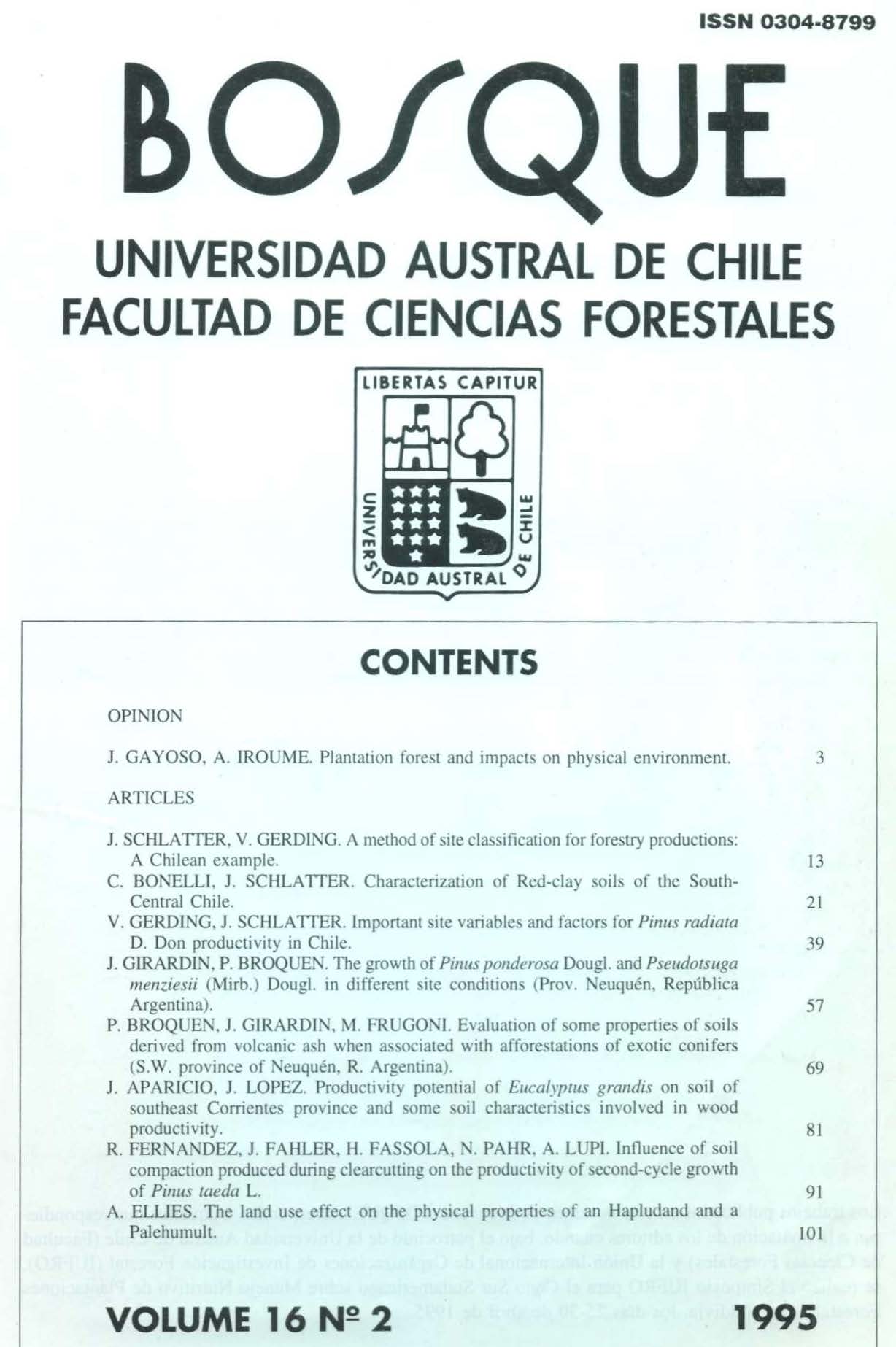A method of site classification for forestry production: A Chilean example
Main Article Content
Abstract
This paper discusses a site classification system based on forest productivity in Chile. The system makes use of the following environmental factors, arranged in order of decreasing importance in forest productivity; macroclimate, local climate, soil physical properties, and finally, soil chemical-nutritive properties. Based on previous analyses, climatic factors are most important in determining forest productivity up to a scale of 1:500.000, with soil becoming the decisive factor at finer scales. Accordingly, Chile was divided into six well-differentiated macroclimatic regions, each one further divided into growth zones (based on climate), growth districts (climate), and growth areas (based on both climate and soil at a scale of 1:250.000). More detailed subdivisions are based on soil physical properties.
The resulting classification system functions as a forest-planning tool, and provides information about the causal relationships of forest productivity. Its applications may also include the management of information related to soil nutrient surveys and soil management.

